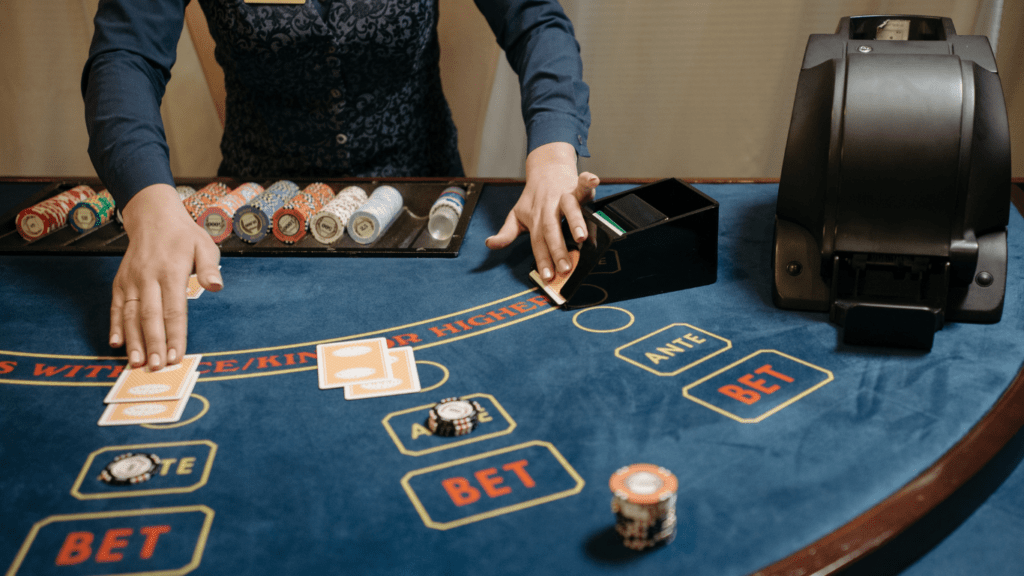Shuffling a deck of cards might seem like a simple task, but there’s a fascinating math behind achieving true randomness. I’ve often wondered how many shuffles it really takes to mix things up effectively. Is it just a few quick swipes or do you need to go all out with dozens of shuffles to ensure every card has a fair chance of landing in any position?
Understanding Shuffle Techniques
Shuffle techniques vary in complexity and effectiveness. It’s crucial to understand these methods to achieve true randomness in a deck of cards.
Types of Shuffles
- Overhand Shuffle: The overhand shuffle involves holding the deck in one hand and pulling small groups of cards from the top into the other hand. It offers simplicity but may not provide adequate mixing after just a few repetitions.
- Riffle Shuffle: The riffle shuffle splits the deck into two halves, which interleave the cards. Research indicates that around seven riffle shuffles significantly randomize a deck, creating complex arrangements.
- Faro Shuffle: The faro shuffle involves perfectly interleaving two halves of a deck. It’s a precise method, but it requires skill to perform accurately. This shuffle achieves a known order, making it predictable after a certain number of repetitions.
- Monkey Shuffle: The monkey shuffle entails tossing cards randomly and gathering them. Though it sounds effective, studies show its randomness is often unpredictable, making it less reliable than other techniques.
Effectiveness of Each Shuffle
- Overhand Shuffle: While easy to perform, the overhand shuffle’s effectiveness decreases after just a few iterations. It typically demands at least 10-15 shuffles for decent randomization, but this may still leave patterns intact.
- Riffle Shuffle: The riffle shuffle excels at achieving randomness. Research by mathematicians indicates that a minimum of seven shuffles is optimal, effectively disrupting patterns and ensuring all cards have equal chances across positions.
- Faro Shuffle: The faro shuffle’s effectiveness hinges on performing it accurately. This technique can lead to predictable patterns if not executed with precision. It generally requires eight complete faro shuffles to achieve true randomness.
- Monkey Shuffle: The monkey shuffle’s randomness is inconsistent. It may create chaotic arrangements, but achieving a truly random order is unlikely. The unpredictability of this technique leads to varying levels of effectiveness.
Understanding these techniques allows for better decision-making when seeking to randomize a deck of cards efficiently.
The Mathematics of Shuffling
Shuffling cards involves a fascinating mathematical framework that determines how randomness is achieved in a deck. Understanding various concepts in probability can shed light on how many shuffles create a truly random arrangement.
Probability and Randomness
Probability is essential to grasping the randomness in card shuffling. When I shuffle a deck, I want each card to have an equal chance of appearing in any position. The total number of possible arrangements for a standard 52-card deck is 52 factorial (52!), which equals approximately 8.0658 x 10^67.
Achieving true randomness requires sufficient shuffling to navigate through these vast arrangements effectively. Research suggests that certain shuffle techniques yield faster paths to randomness. For example, a series of calculations shows that seven riffle shuffles can sufficiently randomize a deck, as every position for every card becomes equally accessible.
In contrast, fewer shuffles might lead to clustering, where some cards remain more likely to appear in various spots.
Theoretical Foundations
The theory behind shuffling connects deeply to combinatorics and information theory. Combinatorics helps in understanding the possible arrangements of cards, while information theory analyzes the uncertainty of card positions.
Each shuffle creates a new arrangement based on the previous one, adding complexity. Mathematically, I can view a shuffle as a transformation of the initial state of the deck. The more complex the transformation, the closer the arrangement approaches true randomness.
For instance, overhand shuffling doesn’t sufficiently change the order unless repeated numerous times. Each method relies on its design principles to achieve randomness, and theoretical models can predict the number of necessary shuffles based on the chosen technique.
Studying these mathematical foundations enhances my ability to choose the appropriate shuffling method according to the level of randomness desired.
Practical Shuffling Recommendations
Understanding how many times to shuffle a deck can significantly impact the randomness of card arrangements. Here are key insights on determining the ideal number of shuffles and how deck size affects the shuffling process.
Determining the Ideal Number of Shuffles
Research consistently shows that the effectiveness of shuffling varies by technique. For a standard 52-card deck:
- Overhand Shuffle: Typically requires 10-15 shuffles for decent mixing.
- Riffle Shuffle: Optimal at around seven shuffles to ensure significant randomness.
- Faro Shuffle: Eight shuffles generally lead to a truly random deck, but this method demands precision.
- Monkey Shuffle: Its unpredictability renders it less reliable; shuffling must be extensive to approach randomness.
The key is to adapt the number of shuffles based on the technique used. I emphasize sticking to these guidelines to maximize randomization with each shuffle.
Influence of Deck Size
Deck size directly impacts the complexity of shuffling. For larger decks, the number of possible arrangements increases factorially. For example, a 52-card deck enables roughly 8.0658 x 10^67 arrangements, whereas a 40-card deck allows approximately 2.12 x 10^47 arrangements. This variance in possible orders changes shuffling requirements:
- Smaller Decks: Fewer shuffles often suffice. For instance, a 40-card deck may need around six riffle shuffles to achieve similar randomness to a 52-card deck’s seven.
- Larger Decks: As the deck size grows, so does the need for more shuffling. Larger decks likely require more than seven riffle shuffles to reach a similarly random state.
Adjusting the number of shuffles based on deck size ensures that each card has an equal chance of appearing in any position, making your card game more dynamic and fair.
Implications for Card Games
Shuffling significantly affects the fairness and dynamics of card games. Understanding the implications of shuffling techniques helps ensure that each player enjoys a fair chance, enhancing the overall gaming experience.
Impact on Game Fairness
Game fairness hinges on effective card shuffling. Inconsistent shuffling can lead to predictable outcomes, favoring certain players. Techniques like the Riffle Shuffle, requiring seven repetitions for sufficient randomness, provide a higher level of fairness than the Overhand Shuffle, which necessitates 10-15 shuffles.
The choice of shuffling method directly influences how players perceive chance and strategy in the game. If cards remain less randomized, it’s possible for patterns to emerge, diminishing the randomness required for fair play.
Strategies for Players
Players should adopt specific strategies to maximize randomness in card games. Using proven shuffling methods, such as the Riffle Shuffle or Faro Shuffle, ensures a more equitable distribution of cards after each hand.
I recommend practicing these techniques to eliminate predictability. Players organizing group games might also establish house rules dictating the number of shuffles required before each deal. Regularly incorporating randomness techniques—like rotating shufflers or employing automated shuffling devices—enhances the game’s unpredictability, maintaining an engaging atmosphere and better ensuring fair chances for all participants.


 Danae Lallyola, the visionary founder of Mode Shuffle Gamble, has established herself as a leading voice in the gambling industry by combining deep expertise in casino gaming with a strong commitment to responsible gambling. With a keen eye for industry trends, Danae built Mode Shuffle Gamble into a trusted platform that offers up-to-date gambling news, in-depth online casino reviews, and expert insights on shuffle and deck mastery, all while promoting safe and mindful gaming practices.
Danae Lallyola, the visionary founder of Mode Shuffle Gamble, has established herself as a leading voice in the gambling industry by combining deep expertise in casino gaming with a strong commitment to responsible gambling. With a keen eye for industry trends, Danae built Mode Shuffle Gamble into a trusted platform that offers up-to-date gambling news, in-depth online casino reviews, and expert insights on shuffle and deck mastery, all while promoting safe and mindful gaming practices.